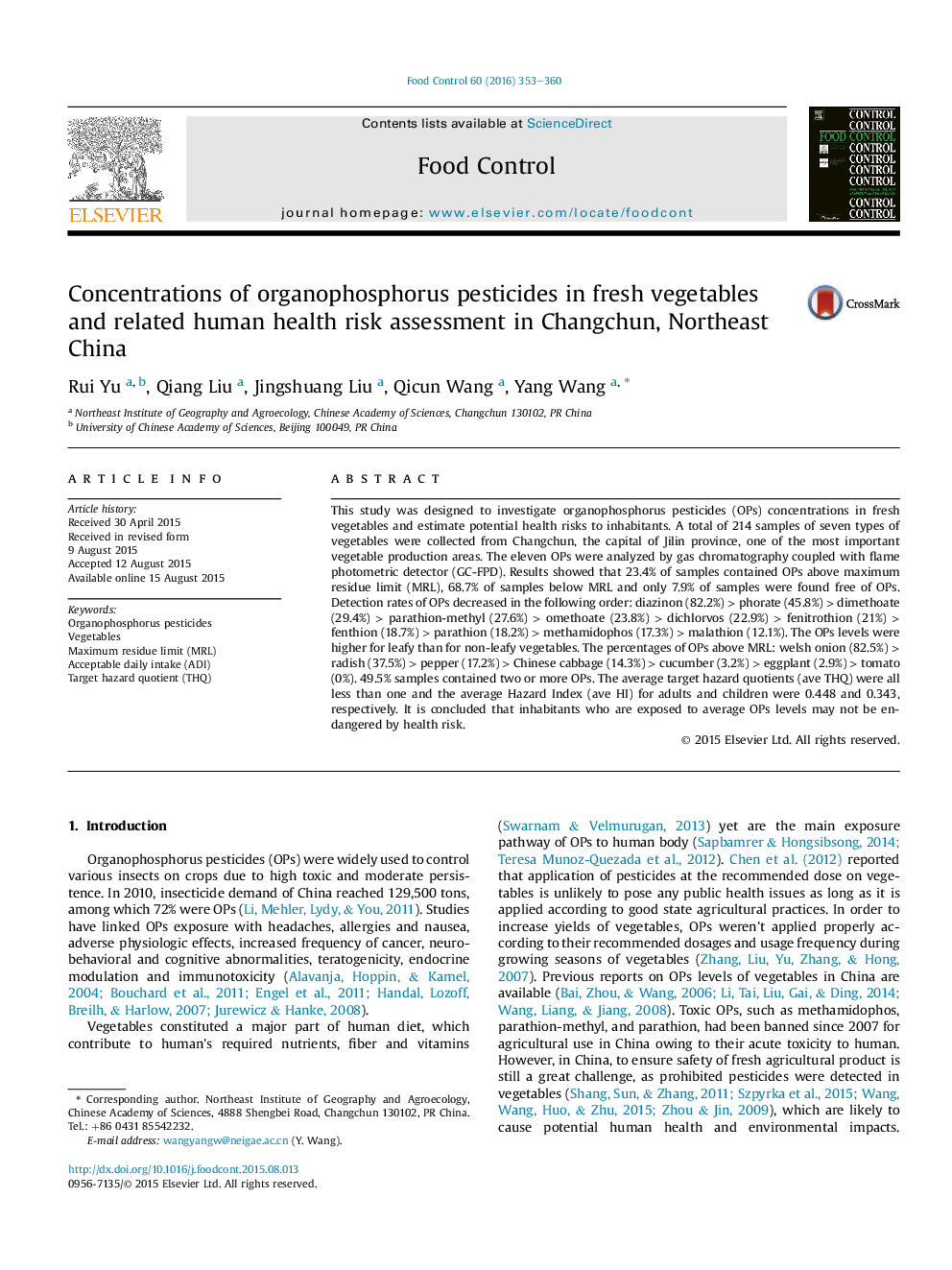| Article ID | Journal | Published Year | Pages | File Type |
|---|---|---|---|---|
| 6390289 | Food Control | 2016 | 8 Pages |
â¢High organophosphorus pesticides residues are noticed in fresh vegetables.â¢Organophosphorus pesticides levels are higher for leafy than for non-leafy vegetables.â¢Potential health risk for adults is higher than those for children.
This study was designed to investigate organophosphorus pesticides (OPs) concentrations in fresh vegetables and estimate potential health risks to inhabitants. A total of 214 samples of seven types of vegetables were collected from Changchun, the capital of Jilin province, one of the most important vegetable production areas. The eleven OPs were analyzed by gas chromatography coupled with flame photometric detector (GC-FPD). Results showed that 23.4% of samples contained OPs above maximum residue limit (MRL), 68.7% of samples below MRL and only 7.9% of samples were found free of OPs. Detection rates of OPs decreased in the following order: diazinon (82.2%) > phorate (45.8%) > dimethoate (29.4%) > parathion-methyl (27.6%) > omethoate (23.8%) > dichlorvos (22.9%) > fenitrothion (21%) > fenthion (18.7%) > parathion (18.2%) > methamidophos (17.3%) > malathion (12.1%). The OPs levels were higher for leafy than for non-leafy vegetables. The percentages of OPs above MRL: welsh onion (82.5%) > radish (37.5%) > pepper (17.2%) > Chinese cabbage (14.3%) > cucumber (3.2%) > eggplant (2.9%) > tomato (0%). 49.5% samples contained two or more OPs. The average target hazard quotients (ave THQ) were all less than one and the average Hazard Index (ave HI) for adults and children were 0.448 and 0.343, respectively. It is concluded that inhabitants who are exposed to average OPs levels may not be endangered by health risk.
